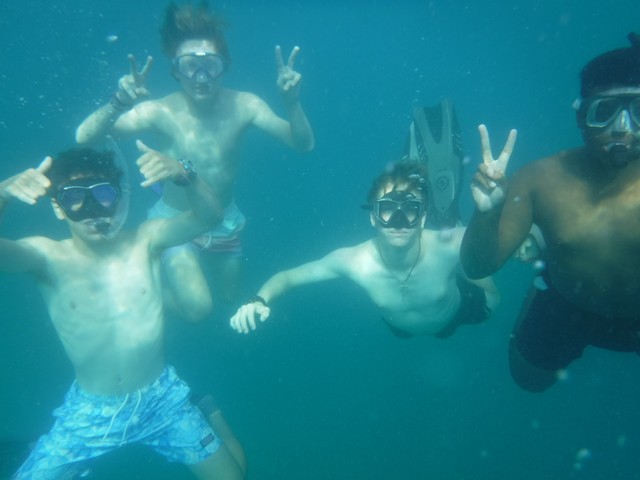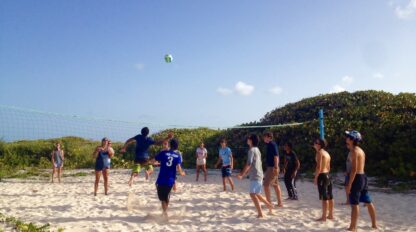Early Alpha, Charlie, Foxtrot, and Sierra, Day 7: Turtling and Sydney's

Written by Stefan Visser and Meredith Evridge
Waking up at Nanny Cay docks after catching up with ourselves, we had some time to explore the shops and feel the steady land under our feet. To keep us going and ready, we did the essential checks on our engines, water tanks and provisions. We set off for Jost Van Dyke around 10 AM with our navigator of the day keeping us up to date on our chart work lesson from the captain, making us more familiar with the beauty of the surrounding islands. Our sail was a lovely and fair jaunt through the cut in-between Thatch, Little Thatch and Tortola. We admired the passing scenery but made it a clean and efficient zigzag, making sure we could enjoy a lengthy stretch towards Little Harbor, Jost Van Dyke. Even though our destination was named Little Harbor, there was nothing small about our sailing maneuvers and learning curves as we looked forward to Challenge Day! This is when the students take over the boat, putting to use all of their lessons and experience from the week up to it. As we arrived in our tranquil harbor and picked up a mooring ball, sandwiches were laid out and enjoyed.
Foxtrot and Sierra students gathered for a lesson on turtles and turtle tagging. Several of Sail Caribbean’s marine bio staff are trained by ARK (Association of Reef Keepers) and certified to tag turtles. Students were briefed on ARK and Sail Caribbean’s turtling policy; you have to hold a certification in order to tag, everyone has to be quiet once the turtle is on board, you can’t catch it when it’s going up for air, and other important guidelines. It was ensured that students understood hand signals (“We found a turtle” is a fist in the air, two fingers up for when two turtles are found, etc.) and no more than three people can swim after a turtle because we wanted to make sure it has its space. There was a lot to remember as everyone prepared to get in the water. Each person, including the marine bio staff, put on their lucky swimsuits as the boats motored over to Diamond Cay. We were reminded that there used to be many large turtles in this area before Hurricane Irma, and that we’d cross our fingers that there would still be turtles here. Even if we didn’t successfully tag any turtles, there would still be so much to learn.
The turtle station was prepared on-board for any turtle that was caught. This entailed a pad and a wet towel over that. As our crew jumped in the water, one of our staff went around to notify boats that we were participating in marine research. After about an hour and a half of searching for these fascinating green creatures, the clock was ticking and it was almost time to head back to the fleet. A fist went up in the air and everyone turned their attention towards the Green turtle that was found! Before our snorkeling session ended, we had just enough time to note the remora on it (a suckerfish that clings to its turtle host), and to rejoice that turtles were still hanging about this island despite the influence of the hurricane. Back on-board, we had one more short lesson on different types of sea grass. We discussed turtle grass which is what turtles feed on, manatee grass and invasive kinds of sea grass.
As the turtlers returned to the fleet full of new information and skills, their sailing companions continued soaking up Jost Van Dyke’s sun and saltwater, taking shifts again on the innertube or snorkeling. One of our captains held an impromptu knot tying lesson, making students confident with the figure of eight, bowline, and clove hitch.
Everyone was told to put some proper clothes on and bring a little spending money for our evening ashore! We were dinghied ashore to Sydney’s, a restaurant that we have brought many campers to, for yet another enjoyable evening full of food, getting hair braided, and optional buying of hats, shirts, and other swag. The hosts were gracious and friendly, and it was noted by many how different it was to experience a dinner that wasn’t slowly rocking back and forth! The nightly boat meeting was held once all campers were back on their home boats, and then everyone climbed into their hammocks for another hibernation in the breeze.
